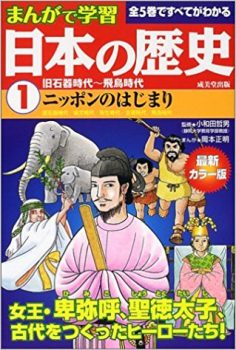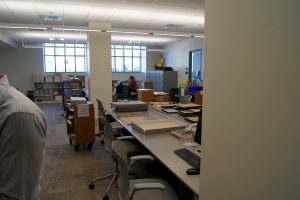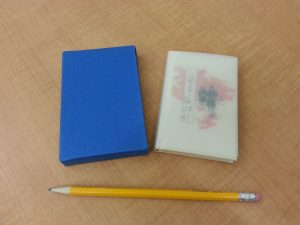By Justine Kang (kang.231@osu.edu)
Recently, the Japanese Studies section at OSU Libraries acquired an advertisement manga illustrated by the early manga artist Okamoto Ippei (岡本 一平, 1886-1948), one of the most influential writers and illustrators of the Taisho era (1912-1926). Okamoto combined cartoon books and comic strips and produced cartoons and serial comics in prominent newspapers including the Asahi Shinbun (朝日新聞).
Entitled On Brightening the Home! (Katei wo akarumi he, or 家庭を明るみへ!), the new acquisition is unusual as a pre-war advertisement for life insurance that featured colorful comics. Okamoto was commissioned to develop a manga story as the central focal point of this pamphlet advertising the products of the Nisshin Life Insurance Company (Nisshin Seimei, or 日淸生命保險株式會社).

With no date on the document itself, there is no evidence as to when the advertisement was published. However, we can find some clues about it through the well-known Nisshin Life Insurance Building, featured on the back of the pamphlet. Constructed in 1932, this building was located in Chiyoda ward, near the Imperial Palace, in central Tokyo. Because the company was eventually absorbed by the Nomura Life Insurance Company in 1941 (and the building was later known as the Marunouchi Nomura Building), we know that the booklet must have been made in the 1930s.
During the tumultuous Taishō and early Show (1926-1989) eras, many Japanese people must have felt a need for life and health insurances. Above are some pictures from the pages of the pamphlet with illustrations by Okamoto Ippei. In the bottom right corner is an image of the iconic Nisshin Seimei building, featured on the last page of the pamphlet.
To learn more about Okamoto Ippei and discover some of his original work, please check out these OSU Library resources:
Okamoto, Ippei. Ippei Manga. Tōkyō: Monkkōsha, 1924.
Okamoto, Ippei. Ippei Manga Kōza. Tōkyō: Sōshisha, 1981.
Okamoto, Ippei, and Yukio Sugiura. Ippei Zenshū. Tōkyō: Ōzorasha, 1990.
Okamoto, Ippei, and Isao Shimizu. Okamoto Ippei Manga Manbunshū. Tōkyō: Iwanami Shoten, 1995.
Okamoto, Ippei, Kanoko Okamoto, and Tarō Okamoto. Okamoto Ippei Ten: Botsugo 50-Nen : Gendai Manga No Paio’nia. Tokyo: Asahi Shinbunsha Bunka Kikakukyoku, 1997.
Okamoto, Ippei. Tesei No Ningen. Tōkyō: Gendai Yūmoa Zenshū Kankōkai, 1928.
Shimizu, Isao, and Kōichi Yumoto. Manga to Shōsetsu No Hazama De: Gendai Manga No Chichi Okamoto Ippei. Tōkyō: Bungei Shunjū, 1994.
For even more resources on these and related topics on the world wide web, please check out the following:
Honjo, Eijiro. “The Development of the Study of the Economic History of Japan Subsequent to the Meiji Restoration.” The Kyoto University economic review 16.1 (1941): 18-31.
McCarthy, Helen. 2010. “The Attraction of Ippei Okamoto.”
ja.wikipedia.org. “丸ノ内野村ビルディング” (Marunouchi Nomura Building).








